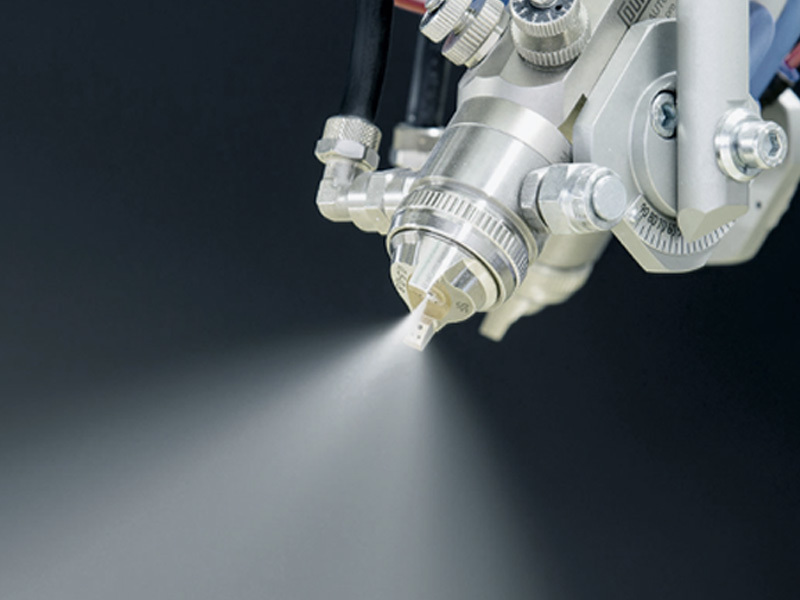Essential Features to Look for in Industrial Solder Mask Ink Coating Equipment
Release time:
2025-05-11
Selecting the right industrial solder mask ink coating equipment involves careful consideration of various essential features, performance metrics, and manufacturer reliability. By focusing on precision, versatility, and innovation, manufacturers can ensure that their solder mask application processes meet the highest quality standards. Investing in advanced coating technology not only improves production efficiency but also aligns with sustainability goals, paving the way for a competitive edge in the ever-evolving electronics industry.

In the realm of modern manufacturing, the selection of reliable equipment is paramount, particularly for applications involving solder mask ink coating. Solder masks serve as protective layers on printed circuit boards (PCBs), ensuring longevity and performance in electronic devices. Therefore, understanding the essential features of industrial solder mask ink coating equipment is vital for organizations aiming to enhance production quality, efficiency, and sustainability. This guide outlines the critical aspects to consider when evaluating solder mask ink coating solutions.
1. Understanding Solder Mask Ink Coating Technology
The process of applying solder mask ink involves several techniques, including screen printing, stencil printing, and photoimageable processes. Each method comes with its unique set of advantages and challenges. Familiarizing yourself with these technologies is crucial to selecting the right equipment tailored to your specific manufacturing needs.
1.1 Types of Solder Masks
Solder masks can be classified into two primary categories: liquid and dry film. Liquid solder masks, often used in high-speed applications, require specific equipment designed for accurate application and curing. In contrast, dry film solder masks come pre-exposed and are more suited for intricate designs. Understanding the differences will help you choose equipment compatible with your desired solder mask type.
2. Key Features of Industrial Solder Mask Ink Coating Equipment
When assessing solder mask coating equipment, several key features play a significant role in determining the overall efficiency and quality of the coating process. Here are the essential attributes to look for:
2.1 Precision Application Systems
Precision in the application of solder mask ink is crucial for ensuring uniform coverage. Look for equipment that offers adjustable application parameters and automated systems to minimize human error. This ensures consistent thickness and reduces waste, ultimately improving your production line's efficiency.
2.2 Robust Curing Technologies
Proper curing is vital for the performance of solder masks. Equipment that integrates advanced curing technologies, such as UV curing or infrared heating, will significantly enhance the adhesion and durability of the solder mask. Evaluate the curing mechanism's effectiveness by examining its ability to handle varying ink viscosities and production speeds.
2.3 Versatility in Ink Compatibility
Not all solder mask inks are the same, and having equipment compatible with a range of inks offers flexibility in production. Choose equipment that can handle various types of solder masks (e.g., epoxy, phenolic) to accommodate different manufacturing requirements and ensure you're not limited to a single product line.
2.4 User-Friendly Interface and Controls
An intuitive user interface enhances operator efficiency and reduces training time. Equipment with programmable controls allows for easy adjustments and saves valuable time during production runs. Look for systems with clear digital displays, easy navigation, and comprehensive monitoring capabilities.
2.5 Efficient Waste Management Systems
Environmental concerns are increasingly crucial in manufacturing. Advanced solder mask ink coating equipment should include waste management solutions to minimize the environmental impact. Features such as ink recycling systems or automated cleaning cycles help in reducing material waste and ensuring compliance with environmental regulations.
3. Performance Metrics to Consider
To assess the effectiveness of solder mask ink coating equipment, consider the following performance metrics:
3.1 Throughput Rate
Throughput rate refers to the volume of PCBs processed within a specific time frame. Equipment that maintains high throughput without compromising quality will optimize your production efficiency. Analyzing manufacturers' specifications can help you find equipment that meets your throughput needs.
3.2 Adhesion Strength
The strength of adhesion between the solder mask and the substrate is a critical factor in determining the longevity and reliability of the PCB. Look for equipment that can perform adhesion tests and consistently achieve industry standards to ensure your products meet quality benchmarks.
3.3 Surface Finish Compatibility
Compatibility with different surface finishes, such as HASL, ENIG, or OSP, is essential for achieving optimal adhesion of solder mask inks. Ensure that the equipment is designed to work effectively with your PCB surface finishes to prevent issues during assembly and operation.
4. Maintenance and Support Considerations
Regular maintenance is vital for maintaining the efficiency and longevity of solder mask ink coating equipment. Consider the following aspects:
4.1 Ease of Maintenance
Choose equipment that is designed for easy accessibility, allowing for straightforward maintenance procedures. Systems that include self-cleaning capabilities or easy-to-replace components will save time and reduce downtime.
4.2 Manufacturer Support and Training
Evaluate the level of support provided by the manufacturer. This includes access to technical support, warranty information, and training resources. A manufacturer that invests in customer training can significantly enhance your team's competence in operating and maintaining the equipment.
5. Cost vs. Value: Making an Informed Decision
While cost is a significant factor in selecting solder mask ink coating equipment, it is crucial to assess the value provided. Consider the following when evaluating cost:
5.1 Initial Investment vs. Long-Term Savings
Higher quality equipment may come with a higher initial price but could lead to long-term savings through reduced material waste, lower labor costs, and increased production efficiency. Conduct a cost-benefit analysis to determine the most cost-effective solution for your operation.
5.2 Total Cost of Ownership
Total cost of ownership (TCO) includes not just the purchase price but also maintenance, operational costs, and potential downtime. Analyzing TCO will provide a comprehensive understanding of the financial implications of your investment.
6. Cutting-Edge Innovations in Solder Mask Ink Coating Equipment
The industry continually evolves, with innovations emerging that enhance the efficiency and effectiveness of solder mask ink coating. Stay abreast of the latest technologies, such as:
6.1 Automation and Industry 4.0 Integration
Automation is revolutionizing manufacturing processes, including solder mask coating. Equipment that integrates smart technologies can improve accuracy, reduce waste, and streamline operations. Features such as real-time monitoring and data analytics enable manufacturers to make informed decisions and optimize processes.
6.2 Environmentally Friendly Solutions
With a growing emphasis on sustainability, environmentally friendly solder mask inks and equipment are gaining traction. Seek out manufacturers that prioritize eco-friendly materials and production methods, which not only benefit the planet but can also enhance your company’s reputation.
Selecting the right industrial solder mask ink coating equipment involves careful consideration of various essential features, performance metrics, and manufacturer reliability. By focusing on precision, versatility, and innovation, manufacturers can ensure that their solder mask application processes meet the highest quality standards. Investing in advanced coating technology not only improves production efficiency but also aligns with sustainability goals, paving the way for a competitive edge in the ever-evolving electronics industry.











